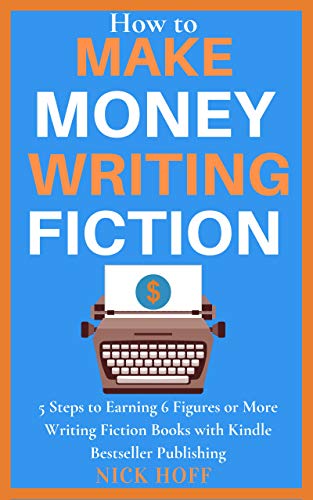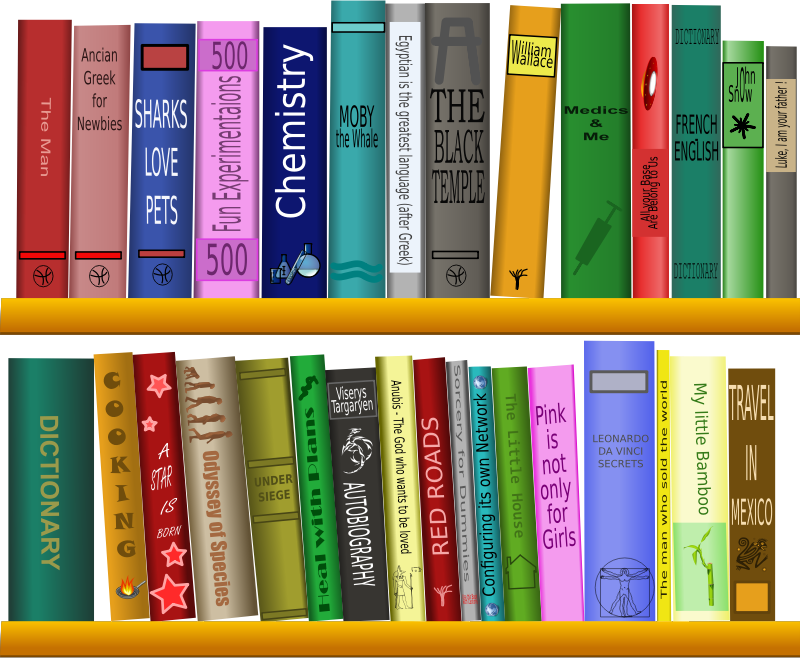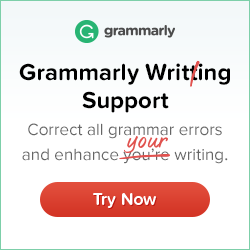Reading Fanatic Reviews
WritingHow to Self-Publish and Market a Book by Hank Quense
Available at Amazon, Barnes & Noble, iBooks, Kobo, Scribd, Smashwords, Mondadori, and Angus & Robertson
How to Self-Publish and Market a Book*
Some Solid Information But Some Gaps and Errors
As a freelance editor and published author myself, I am inexorably drawn to any books about writing, self-publishing, or book marketing. I have read a previous book by this author (the one on creating stories). While I appreciated his knowledge and story-crafting expertise, I did have some issues with the book, especially with the grievous amount of grammar and punctuation errors and a somewhat quirky beginning to each chapter. So I was curious about what this book was going to be like.
The editing seems to be marginally better, although there were still issues with proper punctuation. According to the front matter, this book has been professionally edited, yet the required comma between independent clauses of a compound sentence was only sometimes present. There were a few other missing punctuation marks as well scattered throughout. Words are misspelled (Fivver instead of Fiverr… really?). But I won’t harp on this, though it is a particular pet peeve of mine.
Like the other book, I think this one does a good job of showing one man’s way of doing things in the author/self-publishing space. As you would imagine from the title, this book focuses on self-publishing and marketing, which the author insists must be seen as an integrated whole, not two separate parts. I would agree with that assessment. The information given throughout the book is solid, though I could see the limitations; I wanted to add more info from my clients’ experiences (and my own) to each chapter! I thought that some details given were perhaps unnecessary for a newbie author. For some inexpensive but complex tasks, it is just better to hire a professional than to try to do everything yourself.
I did find some errors of fact that I thought were a little disturbing. For instance, when he discusses using/buying software to format your book, he lists Upwork and Fiverr as a resource to buy software! I don’t think you need to be ordering gigs for software development! Instead, you might consider using someone from either of those places to do the formatting for you. Just a strange little thing that seemed odd to me.
The book is well organized, with the bulk of it being essentially a month-by-month publishing and marketing schedule with each step clearly defined. These scheduling chapters are preceded by an introductory chapter which gives the reader the lay of the land for the six-month plan and defines a few terms. In looking over the schedule, it truly is a good one for a self-published author to follow. Lots of nuggets of wisdom here, even if it is imperfect on several levels. I wish the table of contents showed the self-publishing and marketing tasks for each month. It would have been nice to have this “at a glance” so the would-be author could quickly see where everything was heading. This book would be suitable for authors who are considering this route and certainly for any who will definitely be using it.
Spark by Bradley Charbonneau
eBook available at Amazon only
Audiobook also available at Kobo
Free with Kindle Unlimited
Spark*
Uneven Book But Great Ideas
It is hard for me to define precisely what this book is. The author’s heart is definitely in the right place, but the book feels a little scattered and disorganized to me. As stated in the book blurb, this book encourages parents to write a book with their child or children. The first part of the book seems more motivational than instructional, with several case studies of parents or other adults who have worked on creative projects with children. The author does inject quite a bit of humor into the book and also scatters fragments of moments when he interacted with books and/or his children in a meaningful way. The later part of the book is more of a how-to about what to actually do if you want to try this out, including lots of comments about how it went for him and his sons on their projects. Even though the book itself is a bit uneven, I think it is a great idea. It’s a fantastic way to spend quality time together and connect on a completely different level, and you do have something cool as a result of it. While this book focuses on writing, the ideas within it could be used for a family project for just about any creative endeavor depending on the preferences and inclinations of the adults and children involved.
Character and Structure by Chris Andrews
Available at Amazon only
Free with Kindle Unlimited
Character & Structure*
One Way to Approach The Hero’s Journey in Fiction
The book rather pompously states in the very front that it is not a writing book but rather a masterclass in “combining character with structure to create emotional impact.” Let me be clear; it is a fiction writing book. In the early part, it feels like the author is having a hard time coming to a point, or at least distilling his ideas. When he moves from the theory to more practical matters, that’s when the book gets interesting. The book looks at what the author calls the “unholy alliance” of story and structure, story being about what happens to your characters and structure being how that unfolds—all with the end goal of creating better emotional engagement for the reader with the characters in the story. The author draws heavily from the hero’s journey and also seems to take some Concepts from the Story Grid. Each of the practical chapters ends with application questions that you can ask about your own story to see how you are doing about the particular topic just addressed. The practical chapters are also filled with examples from popular movies, some of which are based on books. If you are a fiction writer, you might find this book as a way to engage with the hero’s journey—and ultimately as a way to creating better structure and emotional resonance.
The Influential Author by Gregory V. Diehl
Available at Amazon, Barnes & Noble, Kobo, Google Play, Scribd, 24 Symbols, Thalia, Mondadori, Angus & Robertson, and Bol.de
The Influential Author***
Required Reading for Would-Be Nonfiction Authors
On so many levels, I found this book to be an absolute delight and would recommend it to anyone who is considering writing a nonfiction book. It seems like these days most nonfiction authors are going for the quick reads category on Amazon, so unfortunately so many nonfiction books are more flash than substance, sometimes with just a paragraph or two given to a meaty topic. That’s part of what makes this book a refreshing change. The author goes into deep detail about the process of writing a nonfiction book. That’s not entirely accurate. He actually starts well before the writing begins. The book begins by discussing, in what he calls the philosophy section, whether or not you should write a book and what you may have to offer the world. Later sections dig deep into the preparation, writing, and publishing process, with step-by-step instructions with lots of details and advice given. As an author and a freelance copy editor myself, I don’t always agree with everything that he says in this book, but for the fledgling nonfiction writer, he gives you much to think about and consider as you approach and work through the process of conceptualizing, writing, and publishing your nonfiction book. I liked, too, that he gives information about how to think about your book even after publication so that you can learn lessons that will take you further in your writing career. With his book, the author is trying to set up future writers for success. Well done!
A Writer’s Paris by Eric Maisel
Available at Amazon, Barnes & Noble, iBooks, Kobo, Google Play, Thalia, Mondadori, Angus & Robertson, Indigo (Chapters), and Bol.de
A Writer's Paris*
The City of Lights from a Writer’s Perspective
What an unusual and delightful book! I’m been finding it hard to describe precisely. The author is a writer who has spent time writing his books in Paris, and this book is meant to encourage other authors to make a similar pilgrimage for their art. He is very specific about places to go, sometimes just to appreciate the place and sometimes to inspire writing. It’s broken down into 34 lessons, which are bite-sized nuggets about writing, Paris, or some aspect of the French or France. He discusses practical issues on occasion, like writing blueprints for your time in Paris and how to work around the potential language barrier. The glimpse he gives of Paris is very intimate, discussing things like footbridges and the human scale of the city. You can tell the man has a great affection and appreciation for Paris, and not only for what magic it evokes for his creative Muse but also for itself. I have never been to France—but took the language in high school and college—but I will admit that this book has given me a bit of the travel bug, making me wish that I would take such a writing pilgrimage. Perhaps one day. And I know just the guidebook to help me along the path.
101 Writing Prompts by Jenn Maxwell
Available at Amazon only
Free with Kindle Unlimited
101 Writing Prompts*
Nice Collection of Prompts
As the title states, this book has 101 writing prompts. Though the subtitle states that this will help you write your novel, only one chapter of prompts (about plots) specifically deals with things you can do with the characters in your work-in-progress novel. Most of the prompts give either a time or a word-number deadline. The author divides the book into several sections, like memories and the supernatural. Now and again, I enjoy working with writing prompts, and I thought that some of these were good suggestions. In fact, #99 is one of my favorites. Some prompts here, like #100, could inspire variations. Some were surprisingly creative. Somewhere not simple, requiring you to do some research either online or out in the real world. If you enjoy writing prompts, this book may be a good addition to your collection.
A Map for Wild Hearts by Andrea Hannah
Available at Amazon and Barnes & Noble
A Map for Wild Hearts*
An Odd but Lovely Journey into the Heart of Creativity
This will probably sound weird, but I chose this book at my favorite book review site because I was perplexed by its description. I couldn’t really tell what the book was about from the blurb or the title and subtitle, so I was curious about what the book actually contained. In this book, the author leads you through making a physical map that expresses aspects of you and your creative bent. In the first part of the book, she goes over the obstacles to creativity. Once those shackles are off, she hopes to lead you on a creative journey of self-discovery that will help you in your future creative endeavors. It is a little hard to explain because the whole book is very right brained; the logical part of my mind is having a hard time pulling together all that this book is and what it intends to do. The author shares many personal stories throughout the entire book and provides a blueprint for making an actual physical map of what creativity means to you. Each main chapter has exercises to get you thinking about various aspects of yourself and the creative process. Even if you don’t want to make a physical map like the book lines out, some ideas she has you think about are worthwhile for anyone who engages in a creative endeavor.
The author doesn’t want to limit the types of creativity that her maps can be applied to, whether you see yourself as a creative making art (visual, literary, etc.), or whether you are just someone who likes to live life creatively (like someone who delights in their beautiful garden). If you see yourself as someone who is creative and would like to play creatively with your creativity :-), you might enjoy this somewhat strange but intriguing book.
Being Creative by Michael Atavar
Available at Amazon, iBooks, Kobo, Google Play, Thalia, Mondadori, Angus & Robertson, Indigo (Chapters), and Bol.de
Being Creative*
Spurs to Creativity
In this book, the author has 20 tools that creatives can use to inspire creativity. The author states that this works for all manner of creativity, but I can definitely see that it would be particularly beneficial for writers, as most of the exercises do involve some writing. The book is divided into five sections: beginning, processes, how to keep going, methods, and ending. Each of these sections has four tools, and the tools themselves have a couple of exercises as well as insight by the author. It is definitely a book that gets you thinking about creativity and can certainly free your mind to look at the world in new ways. The explanations that go along with the tools give much food for thought about the world and the creative process. I play music and write as my creative outlets, and while some of the tools were familiar to me, others were not, but I could see their usefulness. I look forward to working with these tools now and in the future.
How to Make Money Writing Fiction by Nick Hoff

No longer available at Amazon.
Available at Barnes & Noble, iBooks, Kobo, Scribd, and 24 Symbols.
How to Make Money Writing Fiction*
Disorganized Conglomeration of General Book Marketing Information
With the variety of marketing and writing books on the market, I can safely tell you to look elsewhere if you’re wanting solid advice about making money writing fiction. This book is a hot mess in many ways. In general, the information within is mostly what you can find in many other places, often for free; no new ground here. He also doesn’t go into any depth at all; just when it starts to get interesting, he says that he can’t go into detail even about his own story (sometimes also suggesting other, outside reading; Kindlepreneur seems to be a favorite site), and moves on to the next subject. This book mostly appears to be an advertisement for his free email course on book marketing; I think it was mentioned no less than four times in the book, in the beginning, the end, and even interrupting the middle. Of course, that links to a pricey, more expanded version. Some information in the book is just wrong as well, as there have been recent shifts in the Amazon search algorithm. Even though the book purports to be about selling fiction, only in a few places does he actually mention fiction, like in the section on genre; the rest of the book has general information that could apply to any book. The book is poorly organized as well, which is only made worse by the author jumping from topic to topic quickly. The entire text is all so poorly formatted for e-reading. The table of contents is a mixed-up jumble. The book comes across as a thrown-together grab bag of information from a variety of sources that is solely meant to lead the reader to further engage with the author.
The 6-Figure Ghostwriter by Matthew Thrush
Available at Amazon only
Free with Kindle Unlimited
The 6-Figure Ghostwriter*
One Long Advertisement
When I saw this book pop up at my favorite book reviews site, the blurb sounded too good to be true, but it caught my attention because I have toyed around with the idea of ghostwriting for some time. I have done a variety of writing both on the job and for the companies I have worked for, and I do enjoy writing. I was hoping this book might be the answer to my questions about how to exactly break into this business. Unfortunately, the book is more of an extended advertisement for the writer’s mentorship and course business that purports to teach you all that you need to know to become a six-figure ghostwriter. The first part of the book is his description of the early days of his ghostwriting business, which doesn’t actually sound too good as he had to put out an obscene amount of words to make his financial goals. Following this most extended description of his early ghostwriting career is a section of testimonials from people who have taken part in his courses or mentoring. The chapters following give a little bit of information, but even this is mixed with healthy doses of more of the author’s backstory and philosophy. There is little that is actionable here, aside from signing up with Upwork for ghostwriting jobs and signing up for the author’s courses. Really, this is just one gigantic advertisement for his “ghostwriting business” business, where he will supposedly help you on your path to your ghostwriting career. I know that lead magnets are often published on Amazon and other outlets, but usually they actually have something to offer the reader beyond the advertisement. Unfortunately, this book does not.
By the way, out of curiosity, I followed some of the links to his courses. The one he gives you a coupon (so you can get it for free) at the end of the book is a dead, 404 link. One of the links to one of his more expensive programs is live, but even the link about his other courses goes to a 404 page. Buyer certainly beware.





